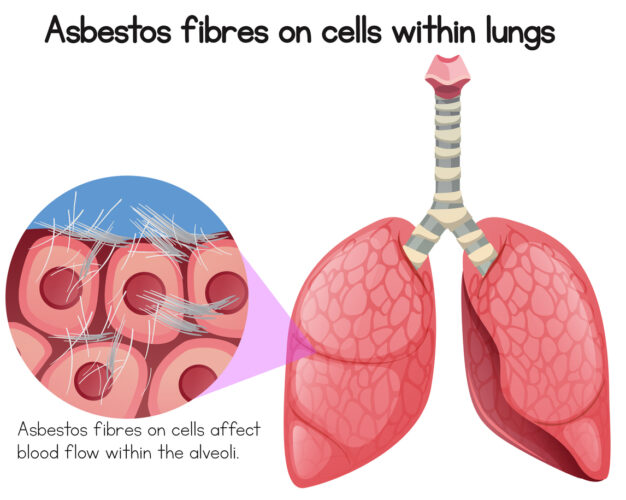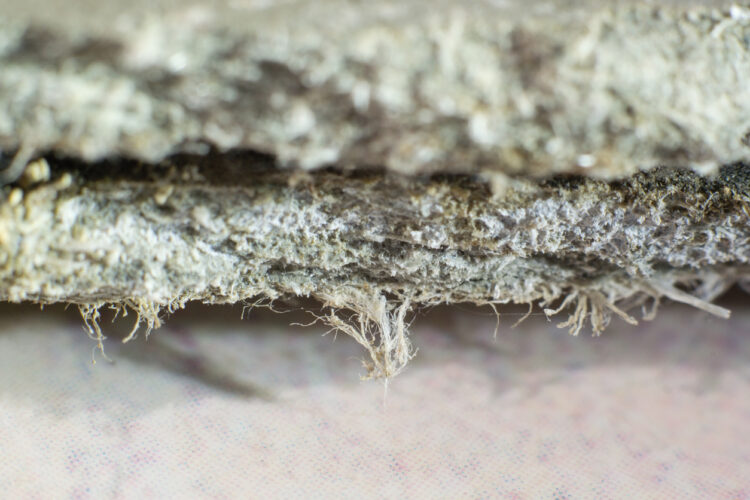Have you ever pondered over the year asbestos got banned from homes? Let's delve into the history of asbestos. This natural mineral earned its fame in construction due to its fire-resistant qualities.
With time, we unveiled a darker side of asbestos. It became clear that exposure could trigger severe health problems, such as lung cancer and mesothelioma. This revelation set off alarms worldwide, ushering in a wave of bans, with the United States leading the charge.
It's worth noting, though, that the U.S. never fully outlawed asbestos. Instead, strict regulations came into play. The watershed moment occurred in 1989 when the Environmental Protection Agency (EPA) rolled out a partial ban. The new law forbade the creation of fresh asbestos-laden products but permitted the use of pre-existing ones. In an unexpected turn of events, a federal court overturned this ban in 1991, allowing asbestos usage to continue.
Despite this setback, strides have been made to curb asbestos exposure in homes. Today, homeowners who worry about possible asbestos presence can turn to licensed professionals. These experts can run tests and, if needed, carry out safe and thorough asbestos removal. As we continue to prioritize health and safety, our homes become more secure and livable spaces.
The Dangers of Asbestos
What is Asbestos?
Asbestos is a mineral that was commonly used in building materials for its heat resistance and durability. It was often found in insulation, roofing, flooring, and other construction materials. Asbestos fibers are microscopic and can easily be inhaled, leading to serious health problems.
The Health Risks of Asbestos Exposure

Encountering asbestos can trigger a range of health conditions, among them lung cancer, mesothelioma, and asbestosis. These illnesses often lie dormant for years, surfacing when they've advanced to threatening stages.
Lung cancer tops the list of ailments linked to asbestos. Typically, this disease can manifest anywhere from 15 to 30 years post-exposure, and unfortunately, it often proves fatal. Then, we have mesothelioma, a rare malignancy that targets the lungs, heart, or abdomen linings. This disease ties almost exclusively to asbestos, and its prognosis is generally unfavorable. Lastly, asbestosis, a chronic lung disease, may arise, inducing symptoms such as breathlessness, coughing, and chest pain.
However, let's underscore the key point: even minimal asbestos contact can pose serious risks. Essentially, there's no ‘safe' asbestos exposure level. The longer and more intense the exposure, the higher the likelihood of disease. Despite these risks, remember, with the right precautions, we can protect ourselves and create a safer, healthier environment for everyone.
The History of Asbestos Use in Homes
When Was Asbestos Used in Homes?
Asbestos was a popular material used in home construction from the early 1900s until the late 1970s. It was used in various forms, including insulation, roofing, flooring, and other building materials. Asbestos was highly valued for its durability, fire resistance, and insulation properties. However, it was later discovered that asbestos fibers could cause serious health problems, including lung cancer, mesothelioma, and asbestosis.
The Popularity of Asbestos in Home Construction
In the mid-20th century, asbestos ruled the roost in home construction thanks to its abundant benefits. It was an all-around favorite from insulation to flooring and even unique finishes like textured paint. Its reign, reaching its zenith during the 1960s and 1970s, saw it incorporated in almost 80% of new homes.
Its fire-resistant properties made asbestos a go-to choice for insulation. In flooring, it championed durability and resistance to everyday wear and tear. Builders often blend asbestos with other materials, crafting stronger and more enduring products.
Despite its widespread use, it wasn't long before the shadow side of asbestos emerged. The minuscule asbestos fibers could be easily inhaled, causing potential harm to lungs and other organs. This revelation spurred many countries, including the United States, to ban its use in home construction. Today, as we better understand the risks and prioritize health, we are making strides in creating safer homes free from hazards like asbestos.
The Ban on Asbestos in Homes
The Discovery of Asbestos Dangers
Asbestos is a mineral that was widely used in construction materials due to its heat resistance and durability. However, it was discovered that asbestos fibers could cause serious health problems when inhaled, including lung cancer and mesothelioma. The dangers of asbestos were first recognized in the 1920s, but it wasn't until the 1970s that regulations were put in place to protect workers from exposure.
The Regulation and Banning of Asbestos in Homes
The journey to regulate and eventually ban asbestos in American homes has been a step-by-step process. The first stride was made in 1978 when the Consumer Product Safety Commission (CPSC) banned asbestos from artificial fireplace embers and wall patching compounds. Fast forward to 1989, when the Environmental Protection Agency (EPA) attempted to implement the Asbestos Ban and Phase-Out Rule. This rule aimed to cease importing, manufacturing and selling asbestos-laden products, particularly those used in homes.
Yet, in a twist of events, the Fifth Circuit Court of Appeals overruled this ban in 1991. Consequently, asbestos use remains legal in U.S. homes, albeit under strict regulations. The EPA has since introduced limits on asbestos content in specific items, such as insulation and roofing materials.
Homeowners, it's essential to remain vigilant of the risks asbestos poses. Remember, caution is key when renovating or repairing your homes. Be sure to engage professionals skilled in handling asbestos and wear protective gear when working with such materials. Moreover, for homes built before 1980, an asbestos inspection is a smart move. With these precautions, we are better equipped to ensure our homes are safe and healthy places to live.
Identifying Asbestos in Your Home

Common Areas of Asbestos Use in Homes
Asbestos was commonly used in homes for insulation, fireproofing, and soundproofing purposes. It was also used in roofing, flooring, and ceiling tiles. Some of the common areas where asbestos was used in homes include:
- Insulation around pipes, boilers, and furnaces
- Vinyl floor tiles and the backing of vinyl sheet flooring
- Roofing and siding shingles made of cement
- Textured paint and patching compounds used on walls and ceilings
- Artificial ashes and embers used in gas-fired fireplaces
- Soundproofing material used in walls and ceilings
- Hot water and steam pipes coated with asbestos material or covered with an asbestos blanket or tape
How to Identify Asbestos in Your Home
Identifying asbestos in your home can be difficult as it is often mixed with other materials. However, there are some things you can look for to determine if there is asbestos present in your home. These include:
- Checking the age of your home: If it was built before 1980, there is a high chance it contains asbestos.
- Examining insulation: If the insulation around your pipes, boilers, and furnaces is white and fluffy, it may contain asbestos.
- Inspecting vinyl flooring: It may contain asbestos if installed between 1950 and 1980.
- Checking roofing material: If it is made of cement, it may contain asbestos.
- Examining textured paint: If your walls or ceilings have textured paint, it may contain asbestos.
If you suspect your home may contain asbestos, it is important to have it tested by a professional. They can take samples and determine if asbestos is present. If asbestos is found, it should be removed by a professional abatement contractor to minimize the risk of exposure.
Dealing with Asbestos in Your Home
What are the risks of DIY asbestos removal?
Asbestos, a dangerous substance frequently found in buildings constructed before the 1980s, can trigger health issues like lung cancer, mesothelioma, and asbestosis. If you think your home might harbor asbestos, seeking professional removal is the safest route. Remember, a do-it-yourself approach to asbestos removal could put you and your loved ones at risk.
DIY asbestos removal might inadvertently allow asbestos fibers to scatter into the air and then be breathed in. Once these fibers nestle into your lungs, they can give rise to severe health conditions. Furthermore, incorrect removal could scatter the fibers throughout your home, potentially endangering others.
So, don't take any chances. When it comes to asbestos, let the pros handle it. By doing so, we protect ourselves and contribute to creating safer, healthier homes for everyone.
What are professional asbestos removal services?
Professional asbestos removal services bring the right skills and tools to safely extract asbestos from your home. They utilize advanced equipment and methods to eliminate asbestos without allowing fibers to waft into the air. They also contain asbestos, preventing its dispersion throughout your space.
When it's time to pick a professional asbestos removal service, go for a licensed and certified one. Their track record in asbestos removal is also vital, as are references from past clients. Don't forget to request a written estimate before the commencement of the job.
While professional asbestos removal may seem pricey, remember your health and safety are invaluable. The expenses of asbestos removal pale compared to the potential costs of treating asbestos-linked ailments. By making smart, proactive decisions, we can ensure our homes remain the safe sanctuaries they're meant to be.
Conclusion
After decades of use, the EPA officially banned asbestos from homes in 1989. This marked a significant step towards ensuring safer and healthier living conditions for all.

